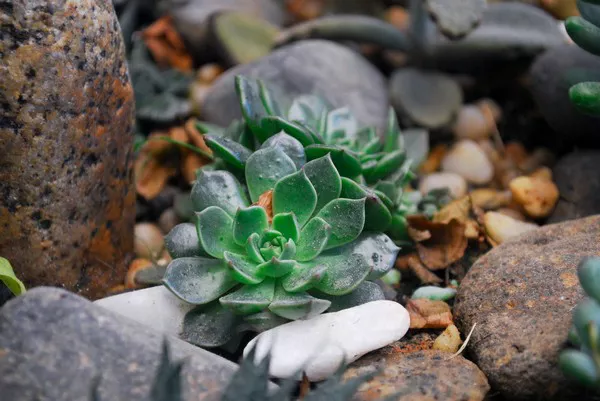Succulents are popular plants known for their ability to store water in their fleshy leaves, making them low-maintenance and resilient. While many succulent enthusiasts propagate these plants through cuttings, collecting seeds from succulents can be a rewarding and fascinating experience. This comprehensive guide will take you through the step-by-step process of collecting seeds from succulents and delve into related topics such as germination, seed storage, and cross-pollination.
Understanding Succulent Reproduction
To successfully collect seeds from succulents, it is essential to understand how these plants reproduce. Succulents can reproduce both sexually through seeds and asexually through vegetative propagation. Seed collection offers the opportunity to grow unique varieties, while vegetative propagation maintains the genetic traits of the parent plant.
Identifying Seed Pods and Maturity
To begin seed collection, one must identify the seed pods on the succulent. Seed pods usually form after flowering, and their appearance may vary among different succulent species. Wait until the seed pods have fully matured on the plant before attempting seed collection, as premature seeds may not be viable.
The Seed Collection Process
1. Gather Essential Tools: Collecting seeds from succulents requires basic gardening tools such as scissors or pruners, small containers for seed collection, and a paper bag or envelope to store seeds.
2. Selecting Healthy Seed Pods: Choose seed pods that appear healthy, plump, and free from signs of damage or disease. Avoid using seeds from weak or stressed plants, as they may produce inferior offspring.
3. Harvesting Seeds: Gently snip or twist the seed pods off the plant using the pruners or scissors. Place the collected seed pods in a paper bag or envelope, ensuring proper labeling for identification.
4. Removing Seeds from Pods: Once back at your workspace, carefully open the seed pods and extract the seeds. Succulent seeds can be tiny and should be handled with care to avoid loss.
Seed Cleaning and Treatment
Before storing, it is essential to clean the seeds to remove any plant debris and ensure optimal germination rates. Cleaning methods may vary depending on the succulent species, but a common approach involves lightly rubbing the seeds between fine mesh screens to remove husks or debris. Some seeds may benefit from stratification or scarification treatments to improve germination rates.
Germination of Succulent Seeds
Germinating succulent seeds can be a challenging but rewarding process. Understanding the natural habitat and germination requirements of your succulent species is crucial. Factors such as temperature, moisture, and light levels play a significant role in the germination process.
1. Growing Medium: Choose a well-draining, sterile germinating medium suitable for succulents. A mix of coarse sand, perlite, and peat moss can be ideal.
2. Sowing Seeds: Sow the cleaned seeds evenly on the surface of the germinating medium. Avoid burying the seeds too deep, as some succulents require light for germination.
3. Moisture and Humidity: Mist the seeds gently to provide adequate moisture without oversaturating the medium. Cover the container with a clear lid or plastic wrap to create a humid environment, promoting germination.
4. Temperature and Light: Place the seeds in a warm location with indirect sunlight. Succulent seeds generally prefer temperatures between 70-80°F (21-27°C) for successful germination.
5. Patience: Succulent seeds can have varying germination times, ranging from a few days to several weeks or even months. Be patient and resist the temptation to disturb the seeds.
Seedling Care
Once the seeds have germinated and tiny seedlings appear, it is essential to provide them with appropriate care to ensure healthy growth.
1. Transplanting: When the seedlings have developed a few true leaves, they can be carefully transplanted into individual pots using a well-draining succulent soil mix.
2. Watering: Water the seedlings sparingly, allowing the soil to dry out between waterings. Overwatering can lead to root rot, which is especially detrimental to young seedlings.
3. Light: Gradually introduce the seedlings to more sunlight, starting with indirect light and gradually increasing exposure to prevent sunburn.
4. Protection: Shield the delicate seedlings from extreme temperatures, strong winds, and pests.
Seed Storage
If you have collected more seeds than you can use immediately, proper storage is essential to maintain their viability.
1.Dry Seeds Completely: Ensure the seeds are thoroughly dried before storage to prevent mold and mildew.
2. Choose the Right Containers: Store the seeds in airtight containers such as glass jars or resealable plastic bags. Be sure to label each container with the seed type and collection date.
3. Cool, Dark, and Dry: Store the containers in a cool, dark, and dry location, such as a refrigerator, to extend their viability.
Cross-Pollination
For experienced succulent enthusiasts looking to create unique hybrids, cross-pollination offers an exciting avenue for experimentation. Careful pollination of two different succulent plants can result in offspring with combined traits.
Conclusion
Collecting seeds from succulents is a fascinating journey that allows plant enthusiasts to experience the full life cycle of these unique plants. From identifying mature seed pods to nurturing seedlings, each step offers valuable insights into the world of succulent propagation. By following the guidelines outlined in this comprehensive guide, you can successfully collect and germinate succulent seeds, enriching your collection with an array of diverse and healthy plants. Happy gardening!


